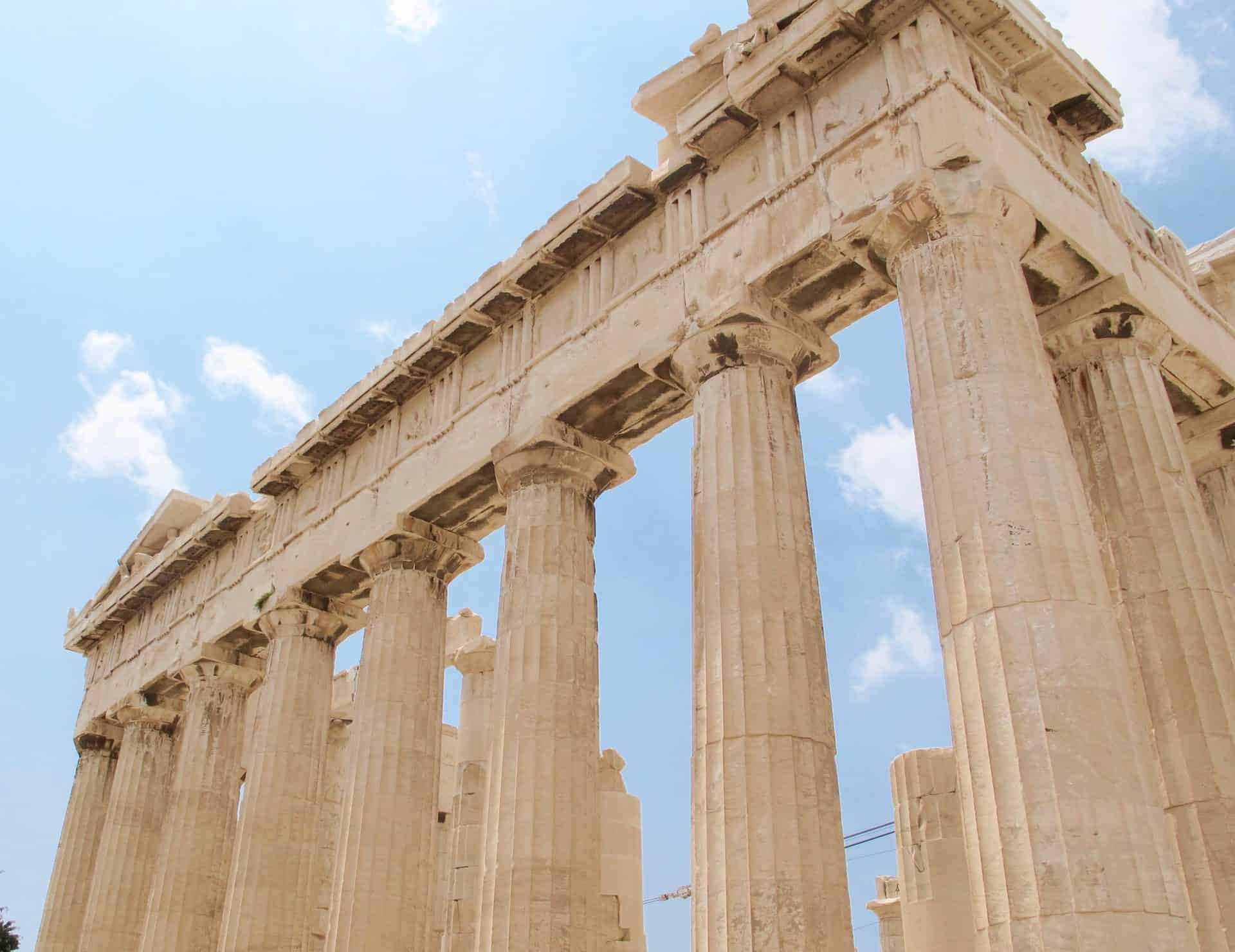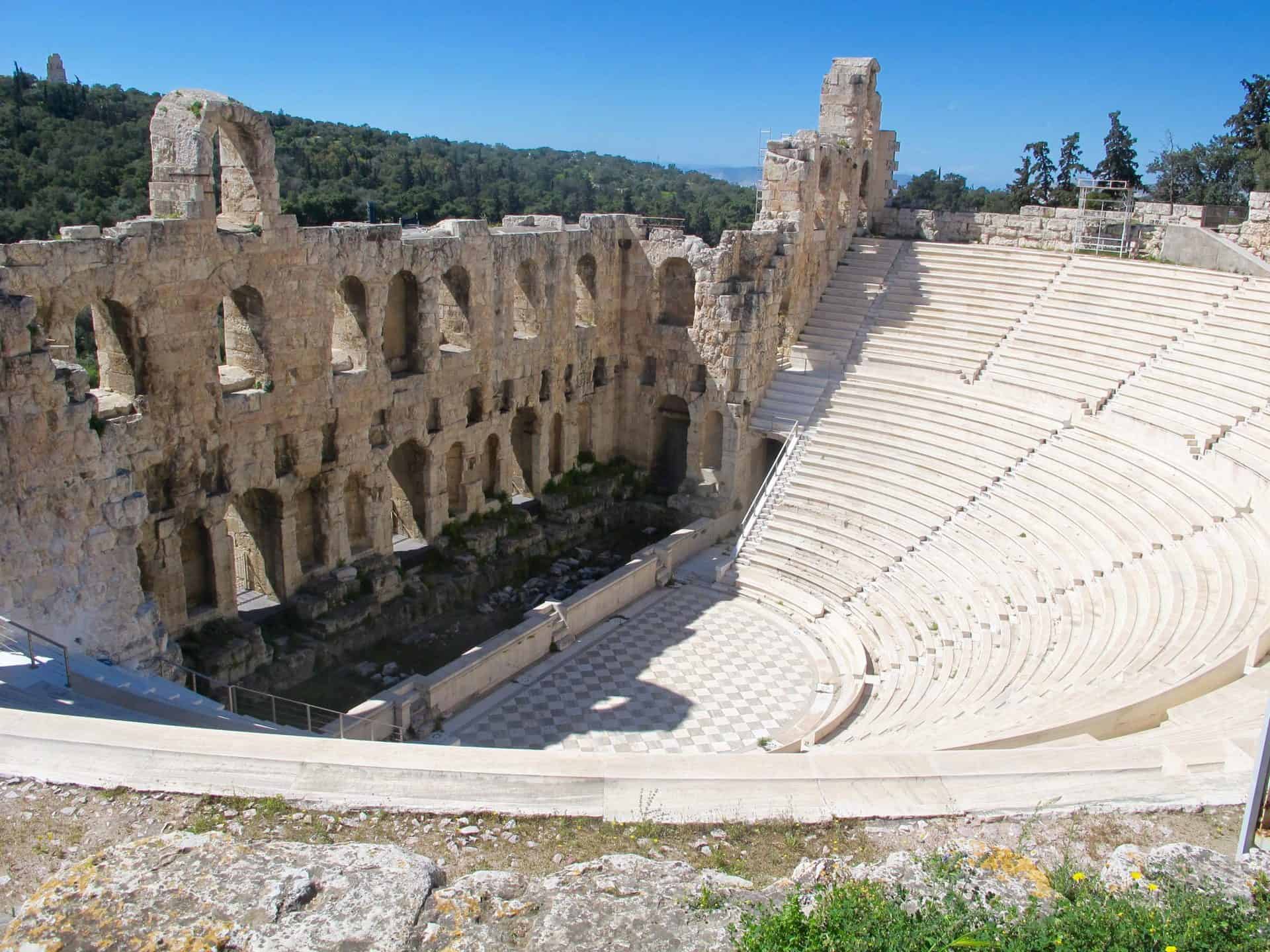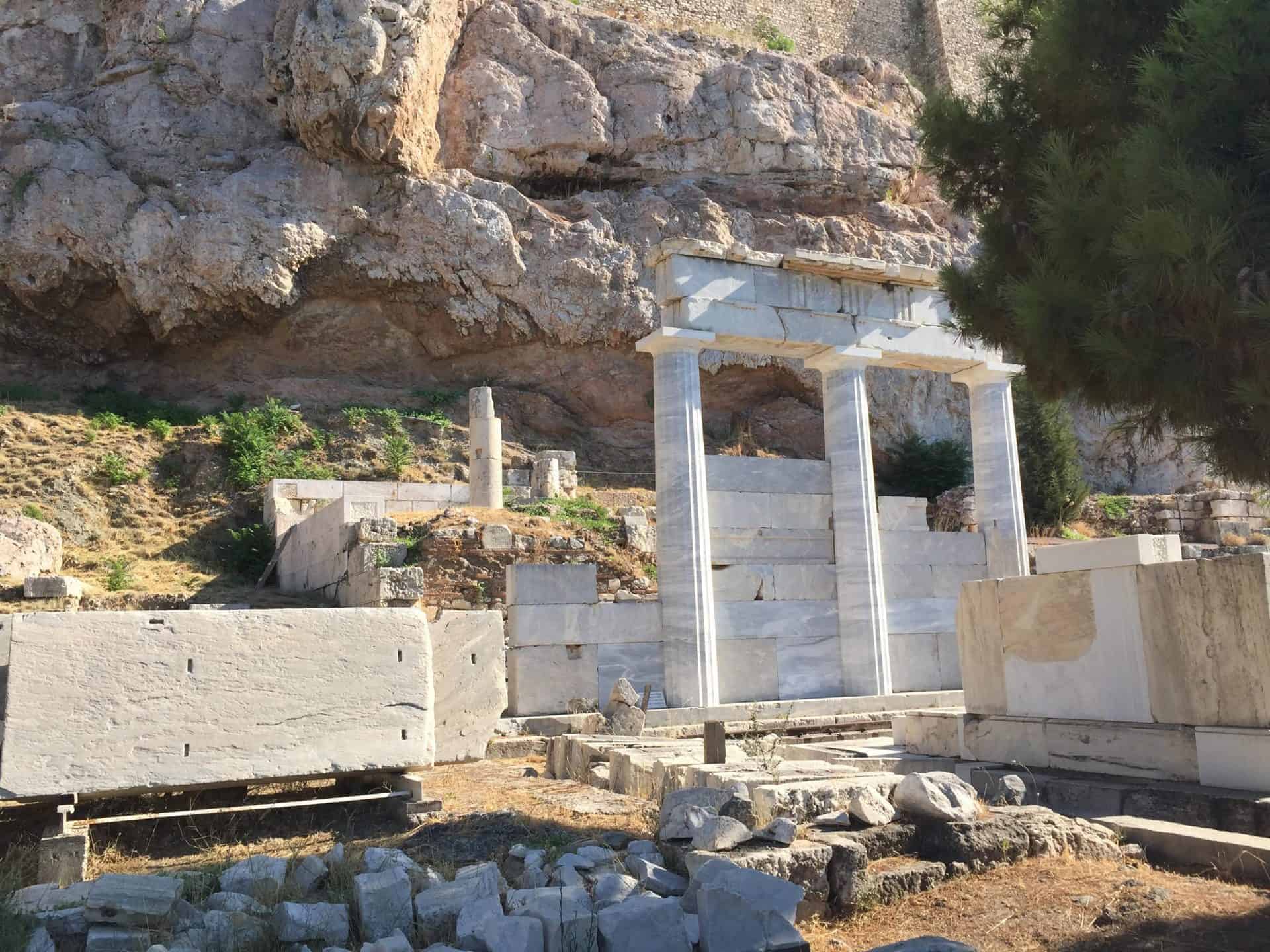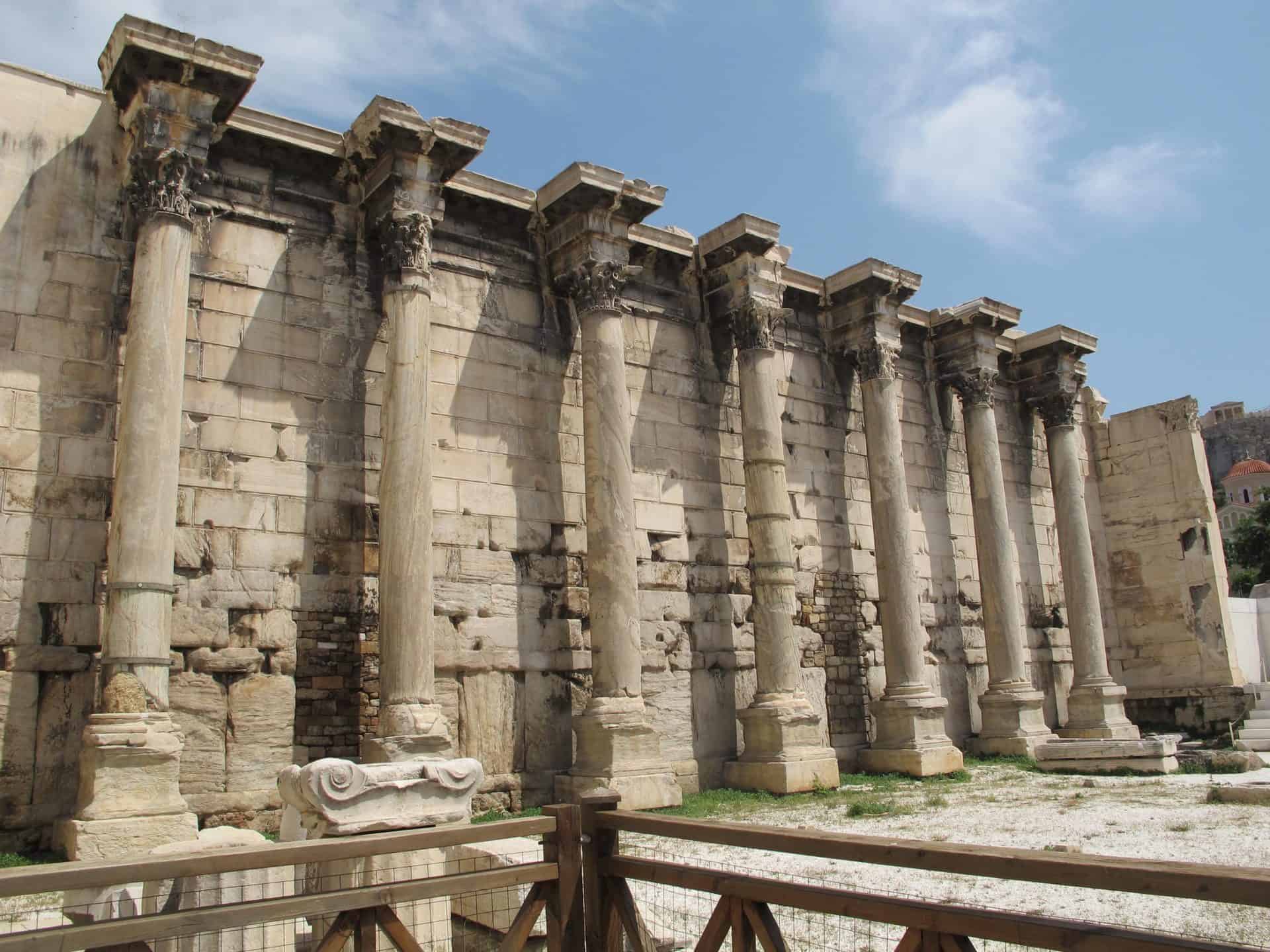Our tour will lead you on a journey through the ancient heart of Athens. We will start in Monastiraki Square, where the history of the city is in full view ahead of us; form the Byzantine church in the Square to the world-renowned Acropolis rising behind it, which we will slowly make our way towards. On our way, we’ll pass the Roman Forum and Hellenistic quarter with the enigmatic ‘Tower of the Winds’ and roughly follow the route of worshipers in ancient times to the Acropolis itself. Once there, we’ll take note of the Citadel’s beginnings before exploring the Erechtheion, Temple of Athena Nike and of course, the Parthenon – arguably the most elegant example of Doric architecture found anywhere in the Greek world.
Tour Creator
Oliver is a Cambridge-based writer and archaeologist. Completing a BA in Archaeology, he continued to postgraduate research specialising in Early Iron Age architecture. He has excavated in Greece and led…Read More Bio »
Athens
GPS-directed
Remote Tour Included
1hr/3hrs(Extended itinerary)
1km/3km(Extended itinerary)
Avoid the Crowds
Allows you to explore without having to be shoulder-to-shoulder in a large tour group
Expert-created Tour
Written by a Cambridge-based archaeologist, whose postgraduate (MRes) research has been devoted to Early Iron Age architecture
GPS Directions
Easy-to-follow GPS directions to get you from one point to the next on your tour
Historic Landmarks
We will visit the best-of-the-best sites of the Acropolis
Remote Tour Included
As with all our tours, a remote tour is included that can be enjoyed from home
Itineraries
Acropolis: Extended
Acropolis: Standard
- Monastiraki - One of Athens’ liveliest shopping districts, with the popular flea market leading off the square. The square also sits at the edge of the ancient city, the perfect place to start our tour of the Acropolis.
- Library of Hadrian - Athens was renowned as a centre of philosophy and learning for centuries and the Roman Emperor Hadrian was no less keen on promoting scholarship in the city. He built this giant library in 132 AD and one of its facades survives to the present day.
- Roman Agora - Agora is the Greek name for the market area, and this Roman extension was started in the 1st century BC. At the back of the site is also an ingenious tower, that hides an invention inside its hexagonal walls.
- Eleusinion - This small sanctuary was founded to celebrate the ‘Elesuinian Mysteries’, a religious festival so mysterious that even after years of academic research, archaeologists and historians are still unsure as to exactly what occurred at the festival. Beyond the Eleusinion we can see the original Greek Agora, the civic centre of democratic Athens.
- Acropolis Wall - Craning our necks upwards we’ll take a look at the Acropolis wall and pick out the rather curious bits of temple and architecture embedded into it. Why would the Greeks use good architectural stone in this wall?
- Areopagus - This smaller crag was known in ancient times as the ‘Rock of Ares’, where ancient rites were performed and meetings of the city elders would take place. However, this rock also had a role in the formation of democracy in Athens and gives one of the best views of the Acropolis to boot.
- The Panathenaic Way - The processional route the Athenians used to get to the Acropolis during their religious festivals and we are going to follow it. Now zigzagging through trees, the route to the Acropolis would have been a long straight ramp that would have started from roughly this spot.
- The Pedestal of Agrippa - Now this pedestal or statue base looks a bit out of place, without a statue on top. However, there were two statues that adorned this plinth over time and its worth discussing them, even if they have now unfortunately disappeared.
- The Propylaia - The monumental entrance to the Acropolis, this is one of the grandest buildings in Athens. Filled with architectural and artistic intrigue, it provides an overwhelming gateway to the excitement of the Acropolis beyond.
- The Statue of Athena Promachos - All sanctuaries and religious areas would have been filled with dedicatory sculptures and statues of gods and goddesses. This Athena was a colossal statue, even by Greek standards, and glistening in the sunlight formed a reference point for miles around.
- The Chalkotheke and Sanctuary of Artemis Brauron - There wasn’t just one sanctuary on the Acropolis but a few and all dedicated to different deities, this one to Artemis, the huntress goddess. It sits next door to an intriguing building that translates as the ‘bronze store’ and has puzzled archaeologists for some time.
- The Parthenon West End - The enduring symbol of architectural and artistic fervour in perhaps all of Greece, the Parthenon is a masterpiece of Doric architecture. Built entirely of pristine white marble it continues to inspire academics and tourists alike in its beauty and we’ll discuss at the western end its architectural genius and some of its decorative sculptures.
- The Parthenon East End - Stopping here at the entrance to perhaps the most magnificent temple of its time, we’ll explore further the sculptures that once adorned the Parthenon. This will introduce the mythological beginnings of Athens and how the Athenians believed their city came into existence.
- Temple of Rome and Augustus - This is a small but lovely little temple added by the Roman emperor Augustus in the 1st century BC. It was circular, unlike any of the other temples we have seen so far
- Sanctuaries of Pandion and Zeus - On this far eastern end of the Acropolis were two other localised and unique cults to Athens. In particular the Sanctaury of Zeus Polieus preserved one of the city’s strangest and probable oldest traditions.
- The Caryatid Porch - This porch of exquisite statues is a fine place to study and reflect on the ever-evolving art form of sculpture in Greece. A world-famous image, the maidens from the caryatid porch have proved a popular study for western architects and painters.
- The Erechtheion - Just as the Parthenon is considered the defining expression of Doric architecture, so too the Erechtheion could be classed as a masterpiece in the Ionic style. It is a completely unique building in its layout – confusing but ultimately elegant.
- The Old Temple of Athena - The remains of an ancient temple lie here, a reminder of what was on the Acropolis before the great Periklean regeneration of the 5th century BC. We’ll also discover Athens in the Bronze Age and think about what could have stood here at the earliest points in the settlement’s history.
- The Temple of Athena Nike - A tiny temple but nevertheless finished with poise and beauty. Nike means victory in Greek and the sculptors and architects who fashioned this wonderful building would surely have felt that winning sensation when completing this fine example of Ionic architecture.
- The Odeon of Herodes Atticus - This steep-sided theatre was added to the suite of Athenian entertainment venues in the 2nd century AD. In fact, it still is part of Athens’ venue list, hosting regular operas, concerts and ballets.
- The Asklepieion - Athens was gripped by plague in the mid 5th century BC and perhaps one of its consequences was this Asklepieion, essentially an ancient Greek hospital. We will explore and discuss how the healing god Asklepius would visit patients in their sleep and what healthcare looked like for ancient Athenians.
- The Choregic Monument of Thrasyllos - It isn’t really important who Thrasyllos was; in essence, he was just a wealthy citizen who financed a play. However, he also managed to fund this tiny gem of a building, hovering just above the Theatre of Dionysus.
- South Slopes of the Acropolis - Over time, monuments were added to the south side of the Acropolis. The Agora continued to develop on the north side as a commercial and civic centre, so a number of extra religious and leisure buildings were added on its south side.
- The Theatre of Dionysus - Dionysos, the god of wine, revelry and performance, presided over this magnificent theatre. It was here that a great generation of dramatists and playwrights, tragedians and comedians developed their trade, form Aeschylus to Aristophanes.
- The Odeion of Perikles - This Odeon, a place for singing and music, was no normal performance space. In fact this was a building like almost no other in Greece and in actual fact was built to resemble a huge Persian tent.
- The Sanctuary of Dionysos Eleuthereos - This sanctuary actually also included the large Theatre but the god’s two temples were built at this lowest slope of the southern Acropolis. We can pause here and discuss the religious rites of Dionysus’ festival and the format of the theatrical competitions.
- Acropolis Museum - The appropriate place to finish is the Acropolis museum. Not only have we run out of major monuments to explore but also if you have the energy, it is highly recommended you explore the wonderful exhibits inside and some of the artefacts that once were inside or on the buildings we have just been visiting.
- Areopagus - This smaller crag was known in ancient times as the ‘Rock of Ares’, where ancient rites were performed and meetings of the city elders would take place. However, this rock also had a role in the formation of democracy in Athens and gives one of the best views of the Acropolis to boot.
- The Panathenaic Way - The processional route the Athenians used to get to the Acropolis during their religious festivals and we are going to follow it. Now zigzagging through trees, the route to the Acropolis would have been a long straight ramp that would have started from roughly this spot.
- The Pedestal of Agrippa - Now this pedestal or statue base looks a bit out of place, without a statue on top. However, there were two statues that adorned this plinth over time and its worth discussing them, even if they have now unfortunately disappeared.
- The Propylaia - The monumental entrance to the Acropolis, this is one of the grandest buildings in Athens. Filled with architectural and artistic intrigue, it provides an overwhelming gateway to the excitement of the Acropolis beyond.
- The Statue of Athena Promachos - All sanctuaries and religious areas would have been filled with dedicatory sculptures and statues of gods and goddesses. This Athena was a colossal statue, even by Greek standards, and glistening in the sunlight formed a reference point for miles around.
- The Chalkotheke and Sanctuary of Artemis Brauron - There wasn’t just one sanctuary on the Acropolis but a few and all dedicated to different deities, this one to Artemis, the huntress goddess. It sits next door to an intriguing building that translates as the ‘bronze store’ and has puzzled archaeologists for some time.
- The Parthenon West End - The enduring symbol of architectural and artistic fervour in perhaps all of Greece, the Parthenon is a masterpiece of Doric architecture. Built entirely of pristine white marble it continues to inspire academics and tourists alike in its beauty and we’ll discuss at the western end its architectural genius and some of its decorative sculptures.
- The Parthenon East End - Stopping here at the entrance to perhaps the most magnificent temple of its time, we’ll explore further the sculptures that once adorned the Parthenon. This will introduce the mythological beginnings of Athens and how the Athenians believed their city came into existence.
- Temple of Rome and Augustus - This is a small but lovely little temple added by the Roman emperor Augustus in the 1st century BC. It was circular, unlike any of the other temples we have seen so far
- Sanctuaries of Pandion and Zeus - On this far eastern end of the Acropolis were two other localised and unique cults to Athens. In particular the Sanctaury of Zeus Polieus preserved one of the city’s strangest and probable oldest traditions.
- The Caryatid Porch - This porch of exquisite statues is a fine place to study and reflect on the ever-evolving art form of sculpture in Greece. A world-famous image, the maidens from the caryatid porch have proved a popular study for western architects and painters.
- The Erechtheion - Just as the Parthenon is considered the defining expression of Doric architecture, so too the Erechtheion could be classed as a masterpiece in the Ionic style. It is a completely unique building in its layout – confusing but ultimately elegant.
Check out a free sample of this tour!
Share this tour
Facebook
Twitter
Pinterest
Get the tour in our app today!
Related Tours
No related posts.












